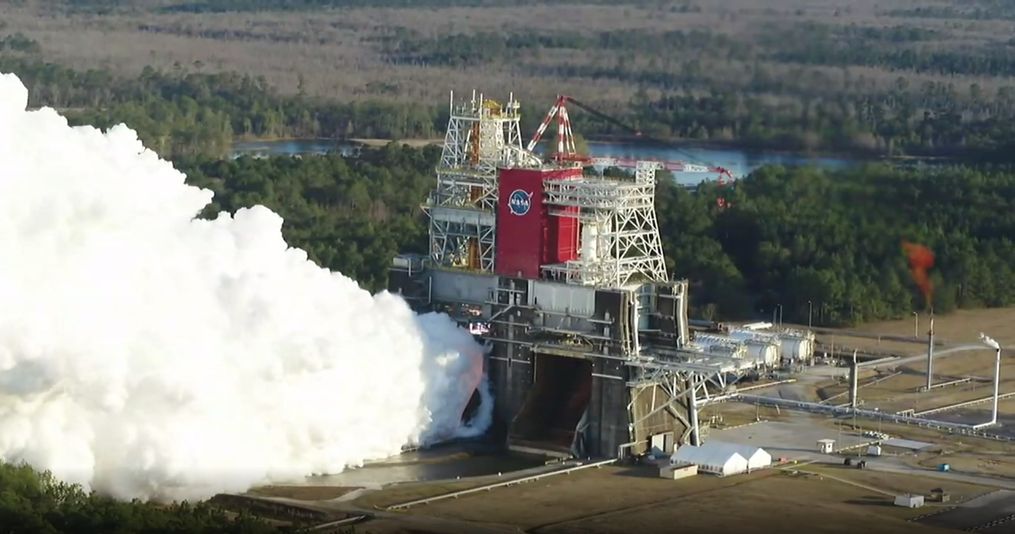Space travel has environmental costs. For research, it might be worth it. To send Jeff Bezos, Richard Branson, and other wealthy tourists into orbit? That’s debatable.
Companies including SpaceX, Virgin Galactic, and Space Adventures want to make space tourism more common. And people are interested.
Japanese billionaire Yusaku Maezawa spent an undisclosed sum of money to SpaceX in 2018 for a private trip around the moon and back. The trip is penciled in for 2023, although the Starship rocket still needs to prove it can reliably take off and land without exploding.
This month, someone paid $28 million to fly on Blue Origin’s New Shepard with the company’s owner, Amazon billionaire Jeff Bezos, and his brother, Mark Bezos. That trip is scheduled for July.
With the Earth in the middle of a climate crisis, sending billionaires to space in rockets might not be the most eco-friendly decision.
The environmental costs of space travel
Rockets burn through an exorbitant amount of propellants to take off and land. Whether it’s the kerosene in SpaceX’s Falcon 9 rocket, the methane in the Starship, or the liquid hydrogen in NASA’s massive new Space Launch System (SLS), burning that material impacts the Earth’s atmosphere.
No matter which fuel is used, all launches emit a lot of heat that agitates nitrogen in the atmosphere to create disruptive nitrogen oxides, explained Eloise Marais, an associate professor of physical geography at University College London. Marais studies the impact of fuels and industries on the atmosphere.
“Depending on where they’re released in altitude, those nitrogen oxides can either contribute to the formation of ozone or depletion of ozone,” she said.
In the stratosphere, where ozone acts as a shield against ultraviolet radiation from the sun, that heat can eat away at ozone.
In the troposphere closer to the ground, that heat can add ozone. Unfortunately, there it acts more like a greenhouse gas and retains heat.
Different fuels damage the atmosphere in different ways.
“[Nitrogen oxide] is important, sure, but there are also solid fuels that are burnt and those produce chlorine,” Marais said. “Chlorine contributes to the destruction of the ozone layer and it’s very, very efficient at doing that.”
Hydrocarbon fuels like kerosene and methane produce carbon dioxide, an infamous greenhouse gas, as well as black carbon, aka soot, that absorbs heat and further warms the Earth.

Clouds of water vapor billow out from the engine of NASA’s SLS core rocket during a hot fire test using liquid hydrogen and oxygen propellant at the Stennis Space Center in Mississippi.
Image: Nasa TV
Before launches even happen, the production of propellants take their toll on the environment. Methane may be obtained through fracking or other means of extraction, which come with a host of issues, and the procurement of super-cold hydrogen can produce greenhouse gas emissions, depending on the method used. Each launch uses thousands of tons of propellants to reach space.
That sounds bad, but there are only a handful of launches that reach the upper atmosphere or go into space every week. Throw a dart at a calendar and you’re more likely to land on a day that doesn’t have a launch than one that does.
Compare that to air travel. There are anywhere from 80,000 to 130,000 flights per day. The United Nations’ aviation body forecasted that airplane emissions of carbon dioxide, a major greenhouse gas, surpassed 900 million metric tons in 2018, and will triple by 2050. Air travel also contributes to the production of nitrogen oxides in the atmosphere.
“If you live near an airport, you’re breathing in dirtier air than people who live farther away,” Marais said.
Against the backdrop of massive, round-the-clock industries like transportation, energy, and agriculture, commercial space travel doesn’t really seem like a big issue — yet.
In the last 20 years, only seven “tourists” have traveled into space, a collaboration between U.S. company Space Adventures and Russia’s MirCorp.
If rocket launches become more common, their effect on the environment will grow. Marais pointed out that we don’t know the full effects of rocket fuels on the atmosphere and environment yet, as researchers have just started to study the topic.
It also takes a lot of steel and aluminum to build a rocket. For every ton of steel produced, 1.9 tons of carbon dioxide is emitted. That number increases to 11.5 tons for aluminum.
An empty Starship is made of about 200 tons of steel alloy. That doesn’t include the rocket, which weighs an estimated 300 additional tons.
It’s a steep price to pay in the name of science, but at least there are some benefits. Everyday items that we take for granted, such as phone cameras, wireless headphones, cat scans, LASIK, and home insulation, trace their origins to spaceflight. Space programs have taught us so much about our universe and planet, including important information on weather patterns and the effects of climate change.
But imagine a future where you can book a flight to space like a trip to Disney World. If rockets were blasting off constantly, the negative effects would pile up.
“Before we decide what space tourism looks like,” Marais said, “we should be doing these kinds of studies to see what the impact on the environment is.”
